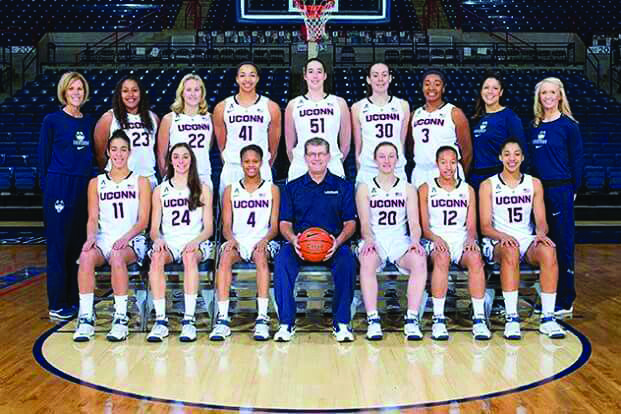DYLAN FOREMAN; Sports Writer: foremad@plu.edu
Last week, the University of Conneticut women’s basketball team won their fourth straight national championship against Syracuse leaving the National Collegiate Player of the Year, senior Breanna Stewart, with a career record of 151 wins and only five losses.
Unfortunately, many people don’t really care about this statistic. In fact, many probably do not care about women’s college basketball or women’s college sports in general, and that is a sad reality.
I do understand where you are coming from though. Women’s sports compared to men’s sports can, at times, seem dull and boring.
A true sports fan however, would relish the opportunity to delve into a team like the UConn women’s team.
It all starts with respect. Not even as a fan but as an institution the NCAA needs to promote the importance of women in college sports. Title IX is no longer an effective tool that can invoke increased participation for women’s athletics.
Title IX was put into effect so that all women’s sports could receive equal opportunity as men’s sports in collegiate athletics. According to Women’s Sports Foundation, in college, women “receive 63,000 fewer opportunities at NCAA Institutions (193,000 female vs. 256,000 male).”
Not only is participation down, but women in college sports receive about $183 million less in scholarships than men. I understand the argument that men’s programs tend to bring in more money for a university, but it is not justification of the fact that any women’s collegiate team at any level works just as hard as their male counterpart.
For example, here at Pacific Lutheran University I can personally attest to the fact that the women’s basketball team works just as hard than the men’s basketball team in the off-season and in-season. Granted, at the Division III level, athletes do not receive compensation, but the concept still applies: women work just as hard as men do.
It all starts from the people at the top. The NCAA needs to develop a new method of building women’s programs in college sports. If that happens, I strongly believe that will trickle down into more fan involvement because at the end of the day, they deserve it.
The day of the national championship game between UConn and Syracuse, I tried to turn the game on at dinner. However, the Mariners game was on and practically everyone sitting in that area was more inclined to watch one regular season baseball game out of a 162-game season instead of a game that happens once a year ,one of the biggest stages in college sports.
If the amount of support UConn had during that game is any indication of the appreciation of women’s collegiate athletics, there needs to be a change in how people view women’s collegiate athletics.




















